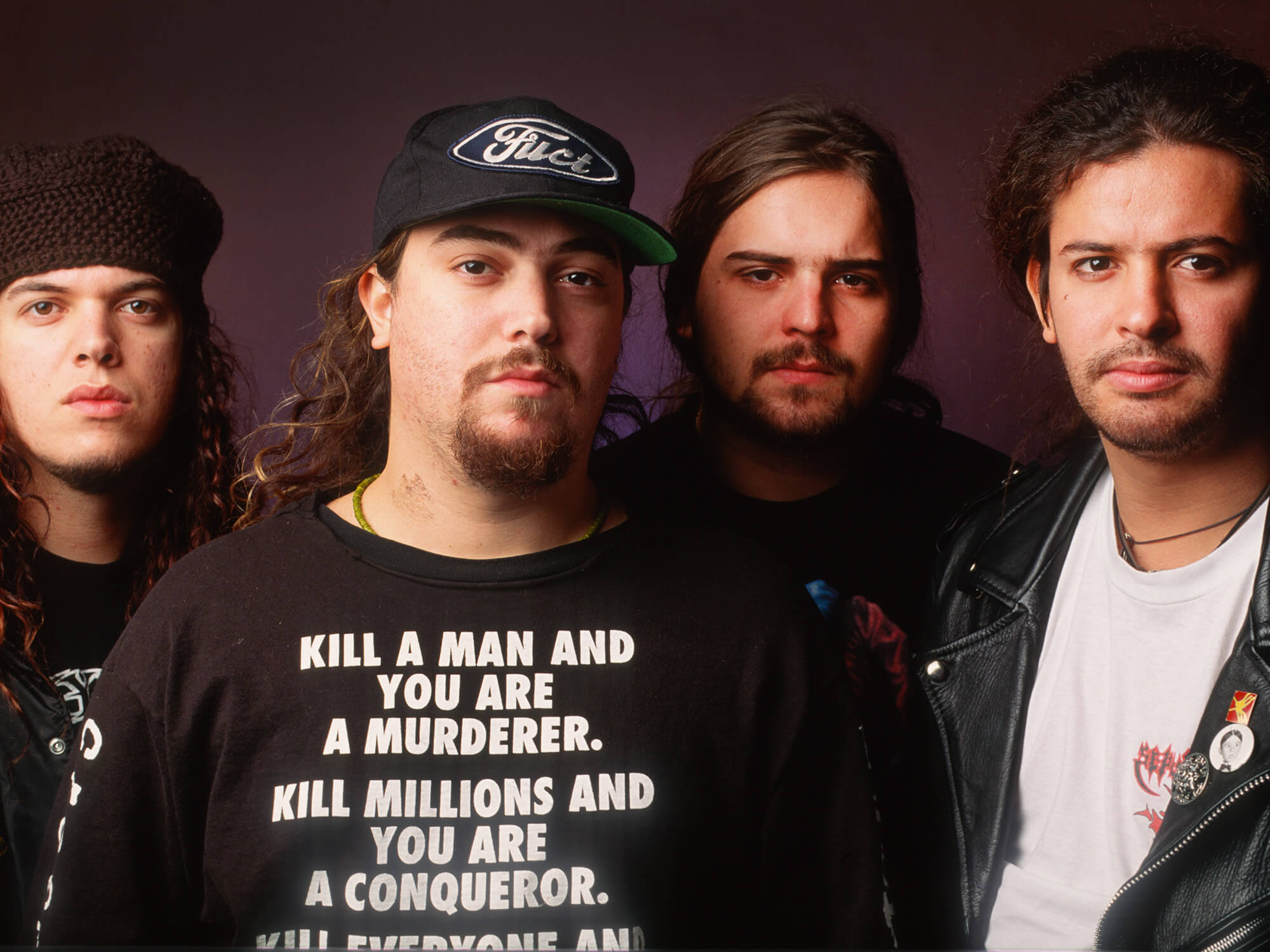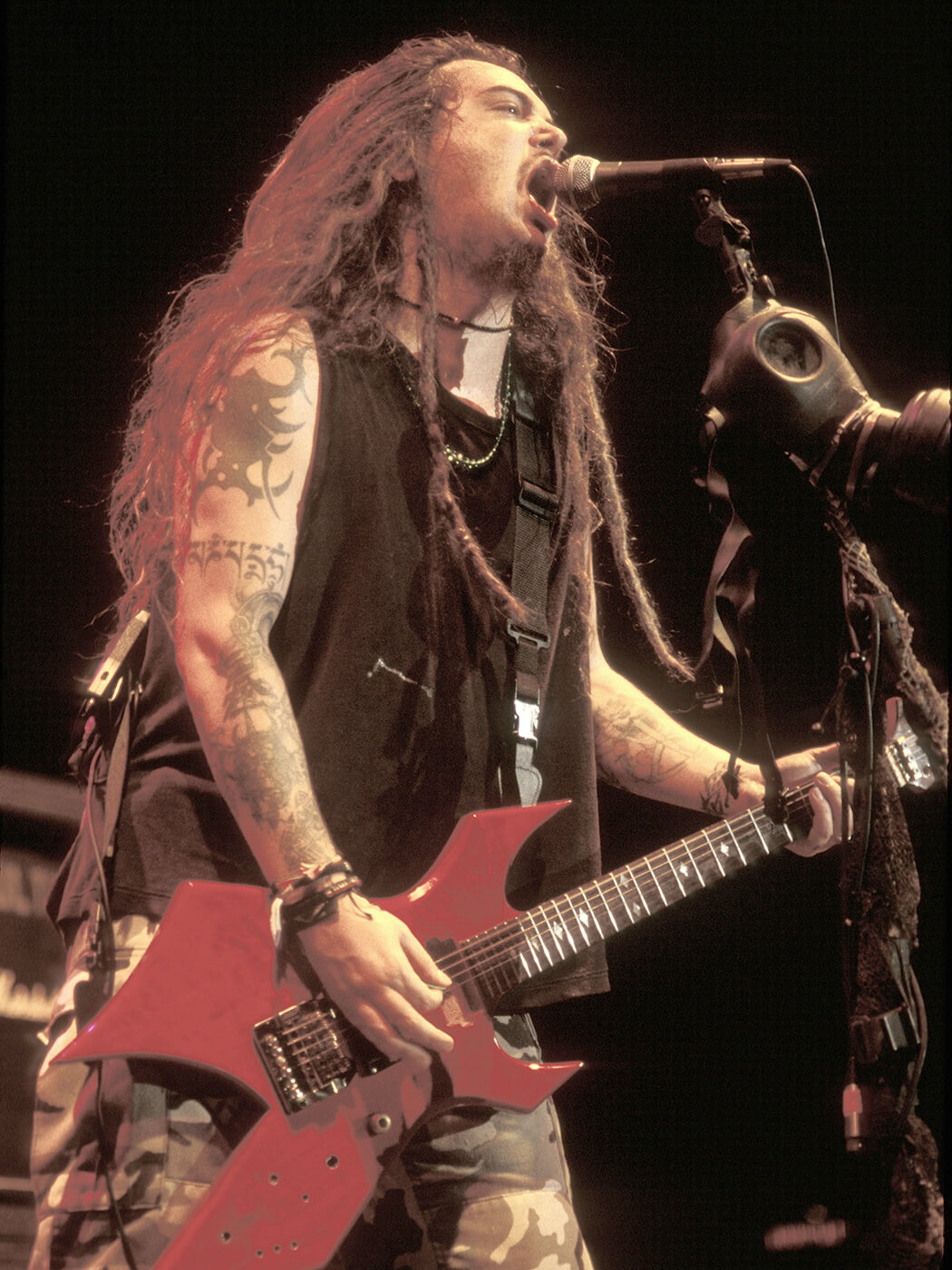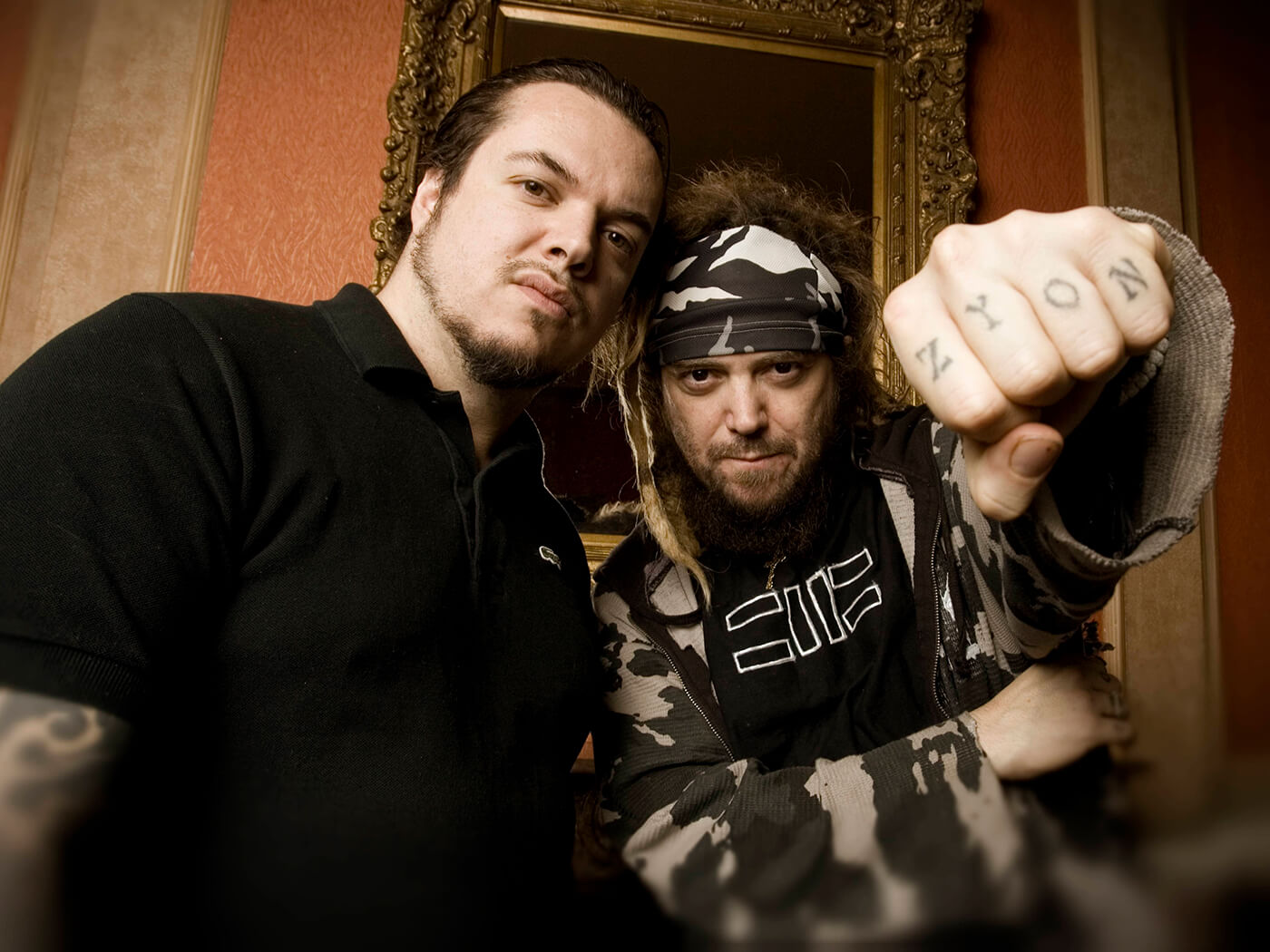Related Tags
The Genius Of… Roots by Sepultura
Sepultura’s highest charting album was a cornerstone of nu metal and should have catapulted its creators into arenas. Instead, it’s the final entry in the band’s golden age.

Sepultura in 1993. Image: Gie Knaeps/Getty Images
Sepultura were the great chameleons of heavy metal. For their first decade, they had the uncanny power to get in on the ground floor of an emerging trend and release an exemplary album within that trend. Then they’d move onto the next new thing to perfect.
- READ MORE: The Genius Of… Below the Lights by Enslaved
Shortly after brothers Max and Iggor Cavalera formed the band in the slums of Belo Horizonte, the tape-trading circuit made their debut album Morbid Visions a cornerstone of the first-wave black metal movement. Future “true Norwegian black metal” mastermind Øystein Aarseth was so intrigued that he and Max became pen pals. Later, when Roadrunner Records released Beneath The Remains and Arise, Sepultura became South America’s ambassadors of thrash for the Western world.
That relevance resumed through Chaos A.D. in 1993. As speed metal crumbled against the commercial force of grunge, the Brazilians feared stagnation and evolved. Like Metallica and their chart-smashing Black Album just two years prior, the band slowed themselves down and stripped back their technicality. The new driving force was Iggor’s mid-paced drumming, with one of his toms changed to mimic the samba percussion the brothers grew up around.
The result of such simplification is that, going into follow-up Roots, Sepultura were one of the few traditionally minded heavy metal bands to thrive in the early ’90s. Just a year before idols like Slayer and Megadeth would tailspin critically and commercially, these iconoclasts climbed from number 119 in the US charts with Arise to 32 with Chaos A.D.. Mainstream publications Entertainment Weekly and The Los Angeles Times salivated over the album. The latter even reviewed it beneath the envious headline of “Sepultura Fills the Void in Thrash Metal”.
Although the subsequent tour put Sepultura on the road with such heavy metal heavyweights as Ministry and Pantera, the high-profile acclaim mind-fucked the band. “All of a sudden, we’re this really big machine and we couldn’t really comprehend it,” Max told Metal Hammer in 2018. “We didn’t know how to deal with it.”
There were also personal problems mounting within their ranks. In January 1993, Max and his wife Gloria, who was also Sepultura’s manager, had their first baby together, Zyon. The promotional campaign for Chaos A.D. included father and son appearing on magazine covers, to the chagrin of guitarist Andreas Kisser. “That’s nothing to do with the band,” he told Hammer. “To have a kid is not that special. I have three myself.”
Despite the pressure and internal strife, Sepultura created their most idiosyncratic, influential and successful music. Roots amplified Chaos A.D.’s samba undercurrents into overtones with its native instruments and chanting, and is also home to 13 no-filler anthems. Roots Bloody Roots, Attitude, Straighthate and Breed Apart especially have found immortality through their hooks, which are so simple that AC/DC could have penned them. Meanwhile, Ratamahatta is a Latin jam able to rage as hard as it parties.

According to Max’s 2014 autobiography My Bloody Roots, the nucleus of Roots was when the frontman was sitting at home one evening in 1995. Wine in hand, he watched At Play in the Fields of the Lord. The 1991 drama stars Tom Berenger and Tom Waits as explorers who are hired to move the Brazilian Niaruna tribe further up the Amazon river so gold miners can claim their land. Max, who’d previously shown minimal interest in his country’s indigenous people, was inspired, and chose to make native tribal sounds the conceptual heart of Roots.
To make the album more authentic, the singer recorded with the Xavante tribe in central Brazil. He also played indigenous instruments like the berimbau, which provides the clanging opening of Attitude. Meanwhile, Iggor used timbau and djembe drums.
The lion’s share of the tracking, though, was done in Indigo Ranch, California, with Ross Robinson. The producer had recently masterminded nu metal on Korn’s debut album, of which Max was a massive fan. The fact that Roots echoed that record’s downtuned guitars, percussive force and basic, snarling songwriting was once an annoyance for Korn singer Jonathan Davis, despite him (and Faith No More’s Mike Patton) guesting on Lookaway.
However, any stabs at Roots upon release were more than healed over by the upsides. Sepultura thought they were huge after Chaos A.D. – but then its successor reached number 4 in the UK and 27 in the US. It should have affirmed the band as a leading light in how to adapt to the nu metal age. But then the intra-band warfare intensified.

After manager Gloria’s son Dana Wells died in summer 1996, concerns regarding her perceived emphasis on family over the band grew. That December, Max abruptly and acrimoniously quit when the other members suggested they fire his wife. Neither party would taste the success of Roots again: while Max started numerous projects and eventually made amends with Iggor, Sepultura resumed with new singer Derrick Green but none of the commercial impact.
As a result, Roots is retrospectively the last gasp of 90s metal’s most adaptable creative force. The chorus of Breed Apart roars at you, “Open up your mind and go your own way!” If the Max era of Sepultura were to have a gravestone, that would be the perfect epitaph.
Max and Iggor Cavalera will put out re-recordings of Sepultura’s first two releases, Bestial Devastation and Morbid Visions, this year via Nuclear Blast.
